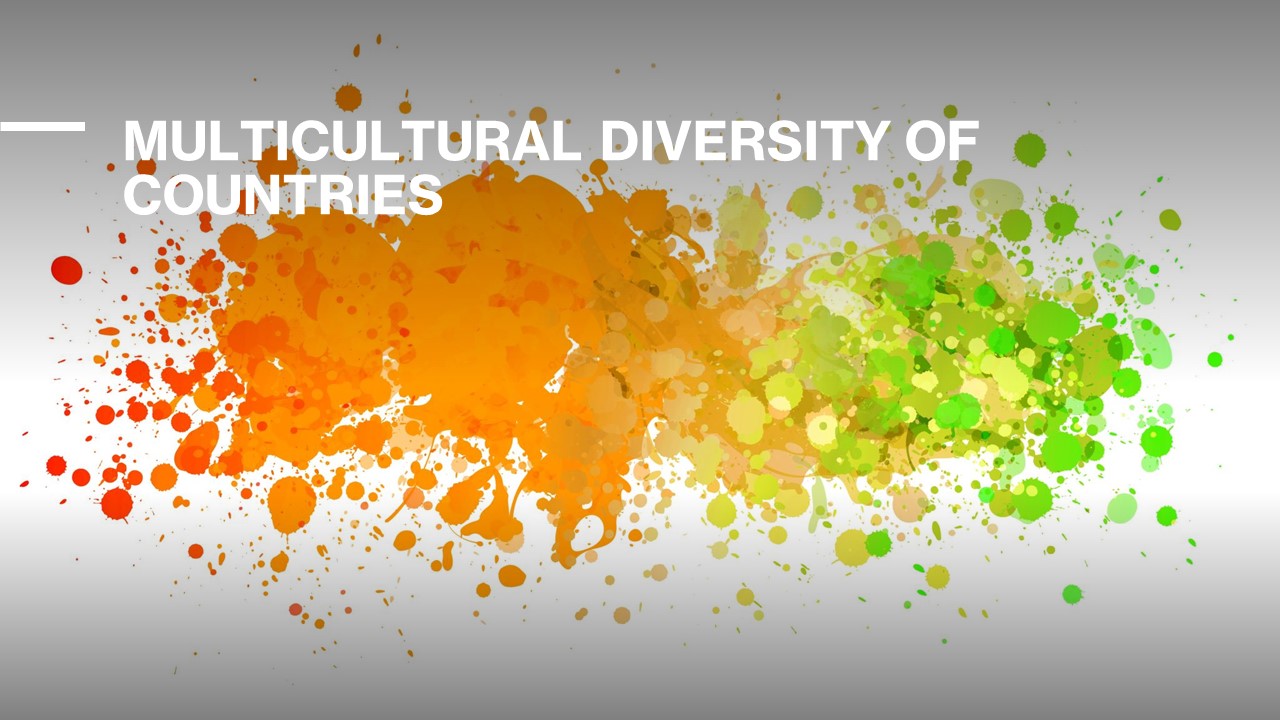Cultures are commonly associated with certain territories and countries. These are national cultures. And cultural borders are viewed as clearly recognizable national, state, or tribal boundaries. These are not quite correct representations of what cultures are. Multicultural diversity exists in many countries around the world.
The multicultural diversity of nations shows how culturally diverse people live in their countries. People living in some countries have long historical traditions of residing together in those territories. Throughout their history, they have maintained homogeneous or heterogeneous populations.
Multicultural Diversity Around the World
The variety of tribal groups in many African countries, such as Chad, Cameroon, Congo, Nigeria, and Togo, are culturally diverse in their origins. Some Asian countries, such as India and Indonesia, and Switzerland in Europe, are also diverse in their ethnic populations. They have long historical traditions of living as close neighbors in those territories.
A modern era of cultural diversity has emerged due to increased mobility, the availability of social media, and mass migration. It is because of these new trends that societies in many European countries, Canada, the United States, and Singapore have become culturally much more diverse than before.
Multiculturalism and multicultural diversity in countries can characterize various characteristics of people, such as racial, ethnic, religious, gender, age, sexual orientation, and the languages they speak. Cultural diversity also encompasses various ways of being for people, such as their cultural values, norms, rituals, dispositions, emotions, and patterns of behavior.
Monocultural Societies
Many countries’ populations are quite homogeneous in their ethnicity, religion, language, and cultural traditions. Due to their historical roots, they have common beliefs, values, norms, and customs of behavior. These countries have monocultural societies. Examples of such monocultural countries are Argentina, Uruguay, Haiti, the Dominican Republic, Rwanda, Sweden, Japan, the Comoros, North Korea, South Korea, and some others (The most (and least) culturally diverse countries in the world, Pew Research Center, 2013).
People in such monocultural countries speak their common languages. However, many national societies are less homogeneous than researchers could expect. Besides, individuals have significant typological differences that extend beyond their cultural similarities.
Multicultural Societies
The populations of many other countries are heterogeneous in terms of the languages, ethnicities, religions, and cultural traditions of the people who live there.
Some countries are culturally diverse from their origins, such as, for example, Cameroon, Chad, Nigeria, the Congo, Togo, South Africa, and some other African countries, due to the historical variety of their tribal groups and languages.
The populations of several Western countries, such as Canada, Switzerland, and the Netherlands, are also multilingual, and people in different regions may speak different languages.
The societies of other countries are heterogeneous because of migration. Canada is the most diverse in this regard. The United States, Russia, and Spain are also quite culturally diverse, though to a moderate degree (The most (and least) culturally diverse countries in the world, Pew Research Center, 2013).
Many multicultural countries, such as Indonesia, India, Nigeria, Singapore, and the United States, have multiethnic populations. People converged on these territories due to migration and other historical events.
A Variety of Relationships in Culturally Diverse Countries
Cultures and people in such multicultural societies may have various relationships with each other. In some cases, they live peacefully in neighboring territories. In other cases, they clash with each other. Sometimes they invade, conquer, and dominate each other. Sometimes, they respect their equality. Human history has witnessed a variety of such intercultural relations.
In some cases, people coexist in certain territories, yet they live in different neighborhoods. In cases of ethnic inequality, they can be segregated. The tendency of people of the same culture to live in proximity to each other and separate from people of other cultures is well-known (Karandashev, 2021). Similarities are attractive.
Generally, cultures and people in multicultural countries can recognize the existence of cultural diversity or not. They can tolerate cultural differences or celebrate them. They can respect each other’s cultural differences and acknowledge that all cultural expressions are valid, or not. They can either appreciate what different cultures contribute to a society or not.
